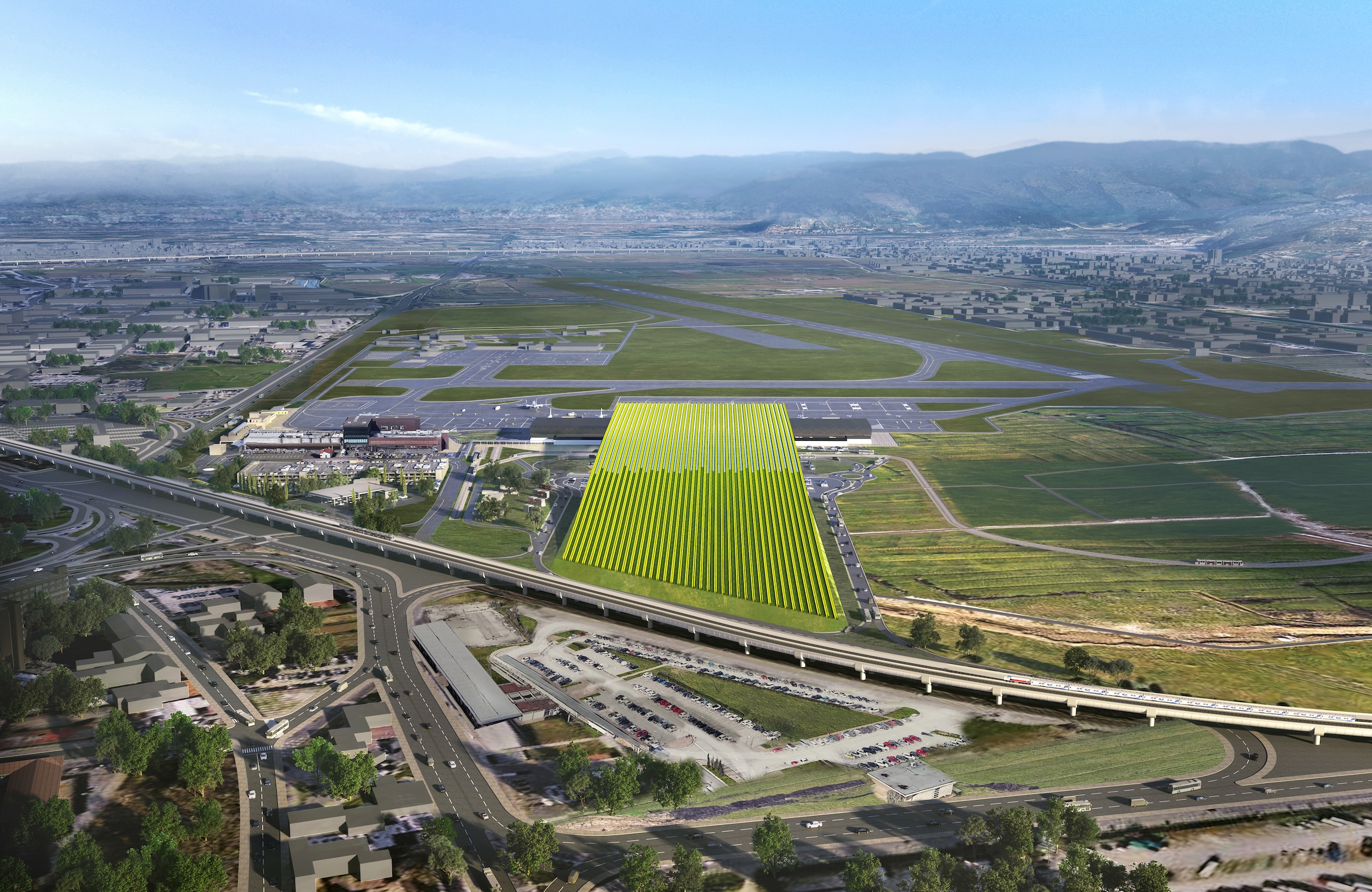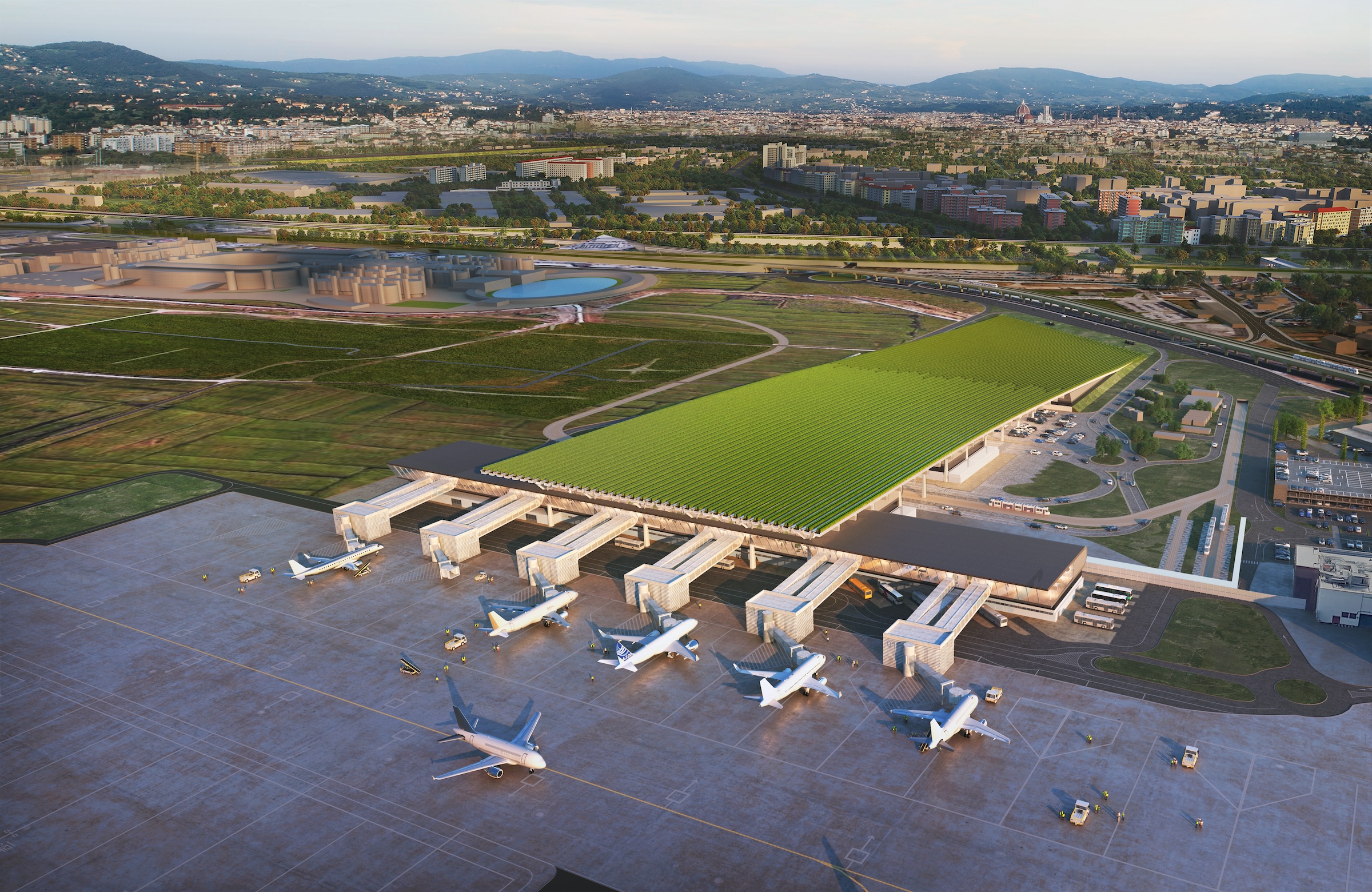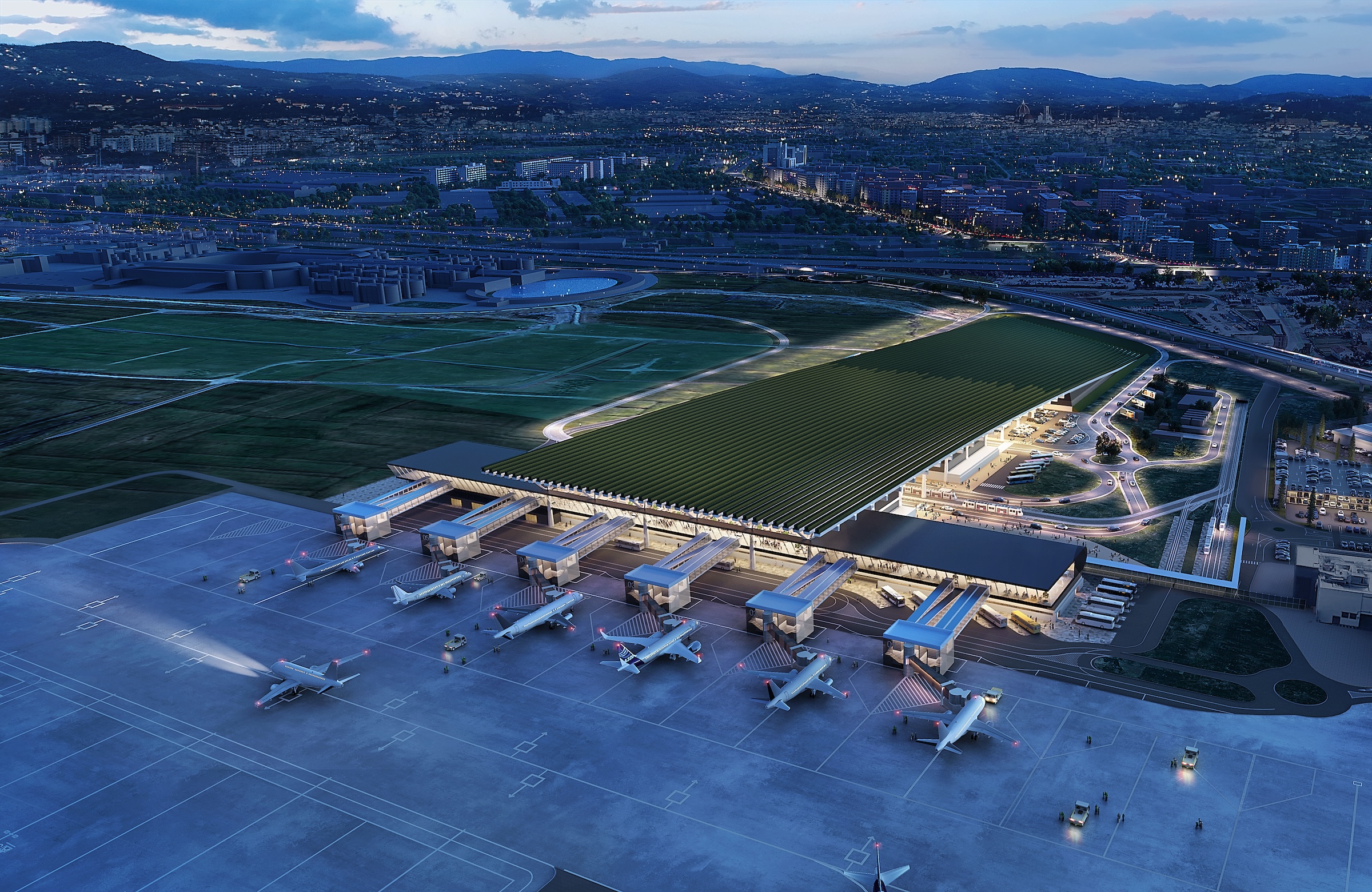At Florence, Italy’s Aeroporto Amerigo Vespucci, the new international airport terminal will feature a fully operating vineyard on the facility’s rooftop. Designed by Rafael Viñoly Architects, the terminal is expected to see over 5.9 million passengers annually. Renderings for the project have recently been released.
The 538,195-sf terminal project will involve both lengthening the existing runway and reorienting it 90 degrees away from the nearby hills, which have limited the operations of many modern planes.
The airport design aims to create a sense of place and improve the passenger experience. In the skylit terminal, arrivals and departures will face each other across a large, central public space, the Piazza. This organization will help streamline circulation into and out of the terminal.
In addition, the terminal will provide access to mass transit, parking, and retail, which will serve both travelers and the local community. The terminal will be connected to the city and the wider region by multimodal transport options, including a new light rail system.
A distinctive feature of the project is a 19-acre vineyard rising above the terminal. This will include 38 active vineyard rows on the building’s sloping roof—contributing to LEED Platinum sustainability rating and representing Italy’s winemaking tradition. A leading winegrower from the region will cultivate the vineyards, and the wine will be crafted and aged in special cellars located beneath the terminal’s roof.
The airport terminal will be completed in two phases: Phase one is expected to be finished in 2026, phase two in 2035.
On the Building Team:
Owner: Toscana Aeroporti SpA
Design architect and architect of record: Rafael Viñoly Architects
MEP engineer: Tekne SpA
Structural engineer: Eckersley O’Callaghan (EOC)
General contractor: Toscana Aeroporti Construction (TAC)






Related Stories
| Jan 31, 2013
More severe wind storms should prompt nationwide reexamination of building codes, says insurance expert
The increased number and severity of storms with high winds nationally should prompt a reexamination of building codes in every community, says Mory Katz, vice president, Verisk Insurance Solutions Commercial Property, Jersey City, N.J.
| Aug 28, 2012
McCarthy begins construction on transportation center at Bob Hope Airport
Designed to meet LEED silver certification standards, the facility will feature unique, above ground base isolators that will resist a maximum credible earthquake.
| Jun 14, 2012
Viscardi joins LEO A DALY as VP, corporate director of aviation programs
Viscardi will be responsible for providing the vision and strategy for growing the firm’s aviation practice, identifying and establishing new clients, as well as maintaining existing client relationships.
| Jun 1, 2012
New BD+C University Course on Insulated Metal Panels available
By completing this course, you earn 1.0 HSW/SD AIA Learning Units.
| May 30, 2012
Construction milestone reached for $1B expansion of San Diego International Airport
Components of the $9-million structural concrete construction phase included a 700-foot-long, below-grade baggage-handling tunnel; metal decks covered in poured-in-place concrete; slab-on-grade for the new terminal; and 10 exterior architectural columns––each 56-feet tall and erected at a 14-degree angle.
| May 29, 2012
Reconstruction Awards Entry Information
Download a PDF of the Entry Information at the bottom of this page.
| May 24, 2012
2012 Reconstruction Awards Entry Form
Download a PDF of the Entry Form at the bottom of this page.
| Mar 29, 2012
U.K.’s Manchester Airport tower constructed in nine days
Time-lapse video shows construction workers on the jobsite for 222 continuous hours.
| Mar 27, 2012
Skanska hires aviation construction expert Bob Postma
Postma will manage Skanska’s nationwide in-house team of airport construction experts who lead the industry in building and renovating airport facilities and their essential features.
| Jan 4, 2012
New LEED Silver complex provides space for education and research
The academic-style facility supports education/training and research functions, and contains classrooms, auditoriums, laboratories, administrative offices and library facilities, as well as spaces for operating highly sophisticated training equipment.















